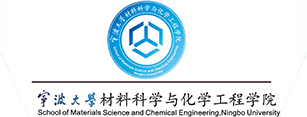报告时间:2023-11-03,星期五,下午13:00-15:00
报告地点:北校区1号实验楼227会议室
报告人:Prof. Suk-Bong Hong (洪锡峰)
报告人简介:
Prof. Suk-Bong Hong was born in Seoul, Korea, where he received a B.S. degree in chemical engineering at Hanyang University in 1983. After receiving an M.S. degree (1985) in Chemistry at Seoul National University, he completed his graduate studies (1992) at Virginia Tech University with Mark E. Davis (now at Caltech, Pasadena, USA). Following a year of postdoctoral work at the California Institute of Technology with Harry B. Gray, he joined the Korea Institute of Science and Technology (KIST) in 1993 and then moved to Hanbat National University in 1998. Since 2007, he has been a full professor at the Pohang University of Science and Technology and leads the Center for Ordered Nanoporous Materials Synthesis research group at the School of Environmental Science and Engineering. He was the Vice President of the International Zeolite Association (2016-2019) and the Editorial Advisory Board Member of ACS Catalysis (2017-2019). He currently sits on the Editorial Board Member of Applied Catalysis B: Environmental. Prof. Suk-Bong Hong commits to the synthesis and characterization of ordered nanoporous materials and their uses in the development of sustainable and green chemical processes, as well as the carbon dioxide separation/DeNOx. He has published more than 240 peer-reviewed international papers with over 7000 citations. He was granted the Edith M. Flanigen Lecture Award, Honeywell UOP (2020), and the Donald W. Breck Award, International Zeolite Association (2022) for his outstanding contributions to the zeolite community.
报告摘要:
There are unmet needs for CO2 capture to mitigate global warming. Fossil fuel combustion is the largest contributor to CO2 emission, while the chemical industry is the largest global consumer of energy among industrial sectors and thus one of the most CO2 emission-intensive. Because of their structural and physicochemical tunability, high chemical stability, and low production cost, aluminosilicate zeolites have long been considered promising adsorbents for CO2 capture, despite the effects of strongly competitive water adsorption from moisture in gas streams. Over the past decades, there has been an intensive search for zeolite-based adsorbents with high CO2 selectivity over small gas molecules like N2 and CH4, and a strong effort to establish a fundamental understanding of their CO2 adsorption mechanism. Among the zeolite types examined most recently, small-pore zeolites with access to porosity via rings of 8 tetrahedral atoms (T-atoms) bridged by oxygen atoms have received much attention, because, compared to medium-and large-pore zeolites, their narrow pore size introduces molecular sieving effects for CO2, which has a smaller cross-sectional diameter than the other molecules from which it must be separated.
欢迎广大师生踊跃参加!

